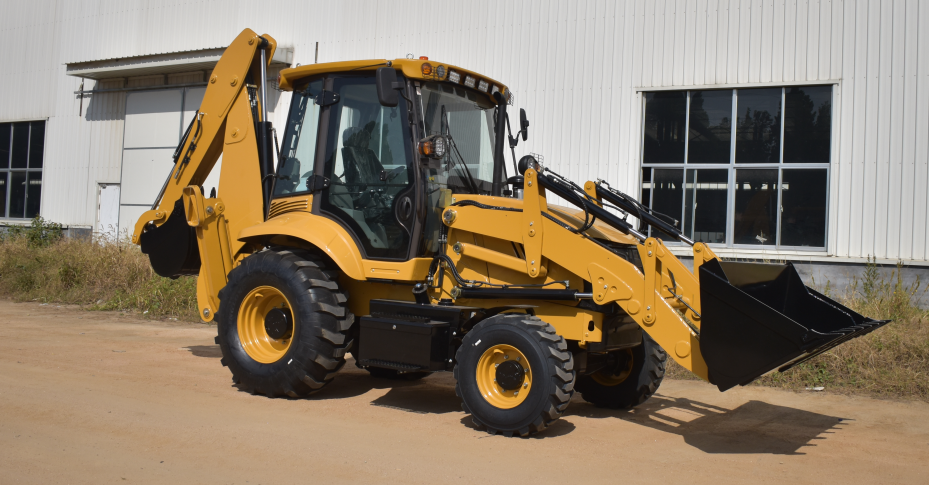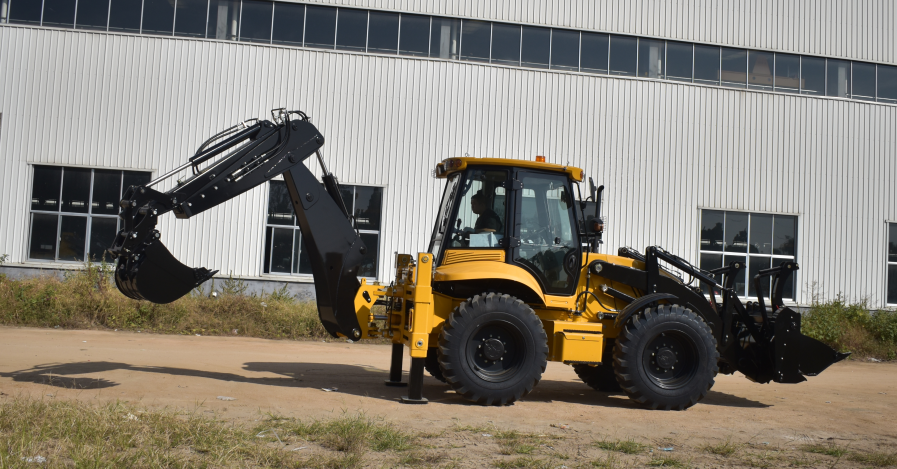Introduction
A backhoe, also known as a backhoe loader, is a versatile construction equipment machine that combines a front-end loader with a rear-mounted excavator. This unique design allows for a wide range of tasks, making it an indispensable tool in various industries, including construction, landscaping, and agriculture.

Key Components of a Backhoe
A backhoe primarily consists of two main components:
Front-End Loader:
1. Bucket: A large, scoop-shaped attachment used for scooping and transporting materials like dirt, gravel, and snow.
2. Boom and Arm: A hydraulically operated arm that raises and lowers the bucket.
Rear-Mounted Excavator:
1. Boom: A long, articulated arm that can be raised, lowered, and rotated.
2. Dipper Stick: A shorter arm attached to the boom, holding the bucket.
3. Bucket: A smaller bucket used for digging, trenching, and other excavation tasks.
How a Backhoe Works
The hydraulic system is the backbone of a backhoe's operation. It uses pressurized fluid to power the various movements of the machine:
· Boom and Dipper Stick Movement: The hydraulic cylinders control the elevation and rotation of the boom and dipper stick.
· Bucket Operation: Hydraulic cylinders control the opening and closing of the bucket, as well as its tilt.
· Front-End Loader Operation: The hydraulic system powers the lifting and lowering of the front-end loader's boom and bucket.
Applications of a Backhoe
Backhoes are incredibly versatile and can be used for a wide range of tasks:
Excavation:
o Digging trenches for utility lines, foundations, and drainage systems.
o Creating ponds and lakes.
o Excavating basements and foundations for buildings.
Material Handling:
o Loading and unloading materials, such as dirt, gravel, and debris.
o Moving materials around a construction site.
Demolition:
o Demolishing small structures and foundations.
o Removing concrete and asphalt.
Land Clearing:
o Clearing land of trees, brush, and other vegetation.
o Grading and leveling land.
Utility Work:
o Installing and repairing underground utilities, such as water pipes and sewer lines.
Types of Backhoes
Backhoes come in various sizes and configurations to suit different needs:
· Compact Backhoes: Smaller, more maneuverable machines suitable for residential and small commercial projects.
· Mid-Size Backhoes: Versatile machines that can handle a wide range of tasks, including construction and landscaping.
· Large Backhoes: Powerful machines designed for heavy-duty applications, such as mining and large-scale construction projects.
Safety Considerations

When operating a backhoe, it's essential to prioritize safety:
· Operator Training: Ensure operators are properly trained and certified.
· Pre-Operational Inspection: Conduct a thorough inspection of the machine before each use.
· Safe Operating Practices: Follow safe operating procedures, such as avoiding overloading the machine and maintaining a safe distance from other equipment and personnel.
· Regular Maintenance: Regular maintenance is crucial to ensure the machine's reliability and safety.
Environmental Impact and Sustainability
While backhoes are powerful tools, they can also have a significant environmental impact:
· Soil Erosion: Improper use of backhoes can lead to soil erosion, especially on steep slopes.
· Water Pollution: Improper disposal of excavated materials can contaminate water bodies.
To mitigate these impacts, operators should:
· Minimize soil disturbance and erosion.
· Properly dispose of excavated materials.
· Use environmentally friendly fuels and lubricants.
Future Trends in Backhoe Technology
· Automation and Remote Control: Advanced automation and remote control technologies are being developed to improve efficiency and safety.
· Electric and Hybrid Power: Electric and hybrid-powered backhoes are emerging as more sustainable options.
· Advanced Telematics: Telematics systems can monitor machine performance, fuel consumption, and operator behavior to improve efficiency and reduce costs.
Conclusion
Backhoes are versatile and powerful machines that play a crucial role in various industries. By understanding their capabilities, limitations, and safety considerations, operators can maximize their productivity and efficiency while minimizing their environmental impact.
Post time:Nov.05.2024
